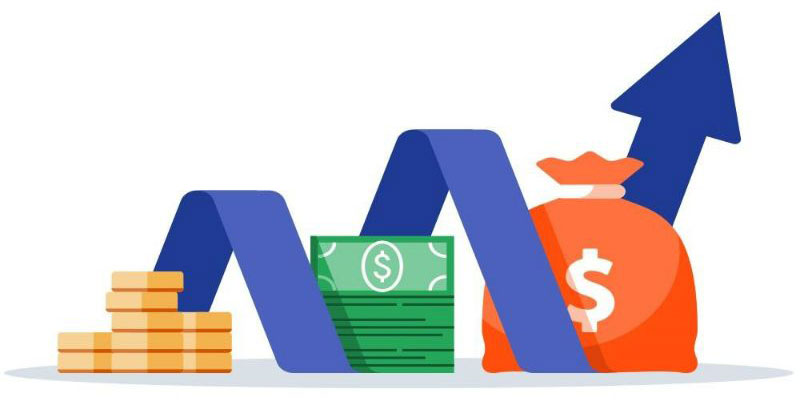Difference Between Series EE and Series I U.S. Savings Bonds
May 26, 2025 By Rick Novak
The U.S. Treasury launched the savings bond program in 1935 to entice citizens to save money and invest in the federal government. The Treasury, however, has caught up with the trends, and physical paper savings bonds are now a rarity. Securities such as savings bonds are among those the government offers for sale on its website.
Nowadays, savers can choose between Series EE and Series I bonds. Series EE bonds are fixed-rate investments with a 20-year return guarantee and a 30-year maturity date. The newer Series I bonds include a variable rate that adjusts with inflation.
EE Series American Savings Bonds

Series E savings bonds are the progenitors of the more well-known Series EE bonds. Original Series E bonds were issued under the name "War Bond" to aid in funding the United States' involvement in World War II. The minimum purchase amount for Series EE bonds is $25.
Over and above the initial $25 face value, you can choose from a wide range of options. Thus, you could spend $25.32 on a bond if you wanted to. A single purchaser has a yearly limit of $10,000. The bonds are only issued to one person and cannot be traded on the secondary market.
Payment and Redemption Values Are Both Doubled
EE bonds are issued by the United States government and come with a guarantee from the government that their value will increase by at least 100% over the bond's standard maturity period of 30 years.
Bondholders often can redeem their capital after 20 years or extend the bond's maturity by 10 years past the doubling date to accrue more interest. The holder cannot redeem the bond for at least one year after purchase.
Following the first anniversary, they can withdraw their money anytime but won't get any further interest. There is a three-month interest penalty for early redemption. In addition, there is a $25 minimum redemption amount.
The Interest Rate For The EE Series

When issued, the interest rate will remain unchanged for 20 years. After the twenty-year mark, the government may make a change. Example: the interest rate on Series EE bonds was 0.10% for the six months ending in April 2020. 8 A Series EE bond is electronic in which the buyer pays the total face value.
The U.S. Government promises to make up the difference if compound interest fails to double the value of the investment within 20 years. State and local taxes do not apply to interest income on EE bonds, but federal taxes do. 10 The owner may be eligible for a tax break if the money is used to pay for approved higher education expenses.
U.S. Savings Bonds, Series I
The first Series I savings bonds were issued in 1998, making them a recent innovation. Series I bonds are not backed by a promise to double in value within 20 years like Series EE bonds are.
As an alternative, Series I bonds are issued for 30 years and offer a fixed rate of return throughout the bond's existence, plus an interest rate adjusted for inflation This CPI number is more accurate since it factors in the purchases of items made by approximately 90% of the US population. Interest on Series I bonds acquired in the six months until October 2021 is 3.54%.
Acquiring Series I Bonds
Interested parties can buy Series I bonds from the United States Treasury. These may be bought with the money you get back after filing your taxes. Obtaining a physical bond certificate for Series I bonds purchased with a refund is unusual.
Series EE bonds have several other features. Bonds issued under the Series I program cannot be sold, although they are redeemable before the expiration of five years from the date of issuance for a penalty equal to three months' interest.
Series I Bond Variations
Suppose Series I bonds are redeemed, and the profits are utilized in the same calendar year to pay for higher education expenses. In that case, the holder may be excluded from federal, state, and local income taxes. The variable interest rate is the main distinction between the two types of savings bonds.
The value of Series I bonds is not guaranteed to double in 20 years, but they do account for inflation. The owner of a Series I bond risks not seeing the expected doubling in value if years of low inflation or even deflation occur.

Should You Refinance Your Mortgage When Interest Rates Rise?

Teaching your kids about financial literacy doesn't have to be boring. Here are some creative ways to use games to make learning fun for your children.

What Is The Premium Tax Credit, Form 8962 Of The Internal Revenue Service?

What is a Credit Limit

Earnings and Profits at ExxonMobil

Municipal Bonds vs. Taxable Bonds and CDs: How Do They Compare?

What Is The Difference Between Interactive Brokers And Td Ameritrade?

What is Growth Stocks

What are the 401(k) Plan Contribution Limits?

10 Best Small Personal Loan Options for 2020

MoneyGram vs. PayPal vs. Xoom: Who Has the Lowest Fees?
